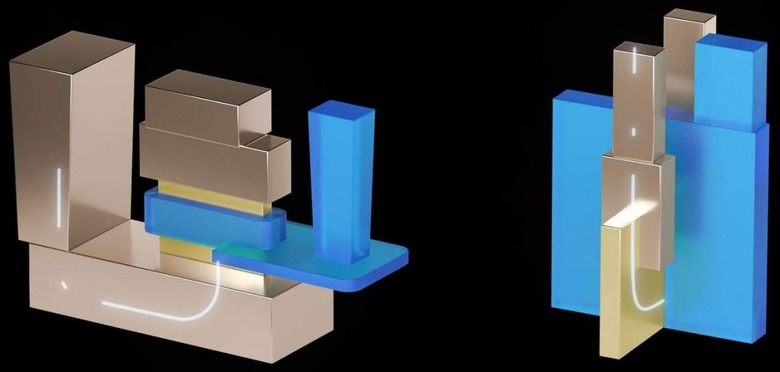Week-Long Phone Battery Teased By IBM And Samsung
Most people need to charge their smartphones every day or two, but a new scientific breakthrough made by researchers with IBM and Samsung may change that. The two companies partnered on a breakthrough semiconductor design they call the Vertical-Transport Nanosheet Field Effect Transistor (VTFET), a new chip architecture that may, when compared to the more conventional finFET tech, cut energy use by up to 85-percent or double performance.IBM Researchers explain that most modern chips are based on lateral-transport field effect transistors (FETs) architecture, an example of which is the fin field effect transistor (finFET). That latter design involves laying down transistors across a wafer's surface, whereas the new breakthrough design VTFET works by arranging the transistors in layers perpendicular to the wafer.
This, the company explains, results in a vertical current flow that sidesteps some existing limitations, at least when it comes to things like contact size and transistor gate length. Optimization, then, is possible by either reducing the amount of energy used or increasing the performance level.
This is a significant breakthrough that, says IBM, shows potential for "scaling beyond nanosheet." This may lead to a number of benefits down to the consumer level, with the two companies explaining that this tech innovation could lead to smartphone batteries that run for a full week before needing to be recharged. As well, the tech may also cut down on the amount of energy used to mine crypto, potentially helping address the major climate change concerns associated with blockchain-based digital currency.

The Internet of Things (IoT) industry may also be revolutionized by this breakthrough, with the researchers noting that reduced energy demands may enable smart devices like connected sensors to operate "in more diverse environments."
Both companies emphasize that the up-and-down current design may extend what is known as Moore's law, referring to Gordon Moore's observation decades ago that an integrated circuit's transistor numbers will double every couple of years. The idea, IBM explains, has neared its limit as chips present physical size limits in which manufacturers are attempting to "pack more transistors."
IBM has been hard at work addressing these growing energy and performance needs. Of note, the company introduced its 2nm tech breakthrough back in May, which makes it possible to put 50 billion transistors on a chip approximately the size of a single fingernail.
That breakthrough alone presents some potentially major changes downstream, including extending phone battery runtime to around four days, improving laptop performance, and cutting down on data center carbon footprints by decreasing energy use. The new joint VTFET design breakthrough from IBM and Samsung builds upon this work, with IBM noting the vertical arrangement "focuses on a whole new dimension."
